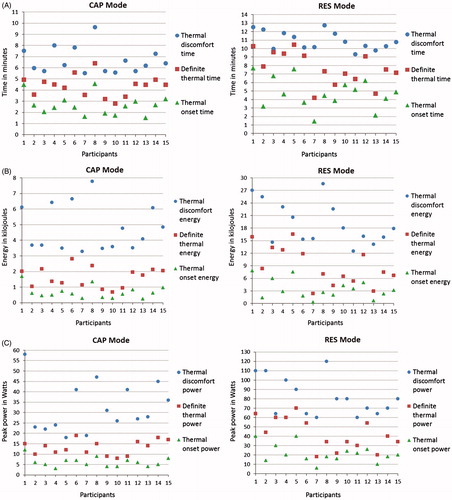Figures & data
Figure 1. Graphs showing the output data as obtained from the device monitoring software. The data shown are from one participant (No. 8). The x-axis shows the monitoring sequence units (more than 1/s) and y-axis shows the parameter recorded.
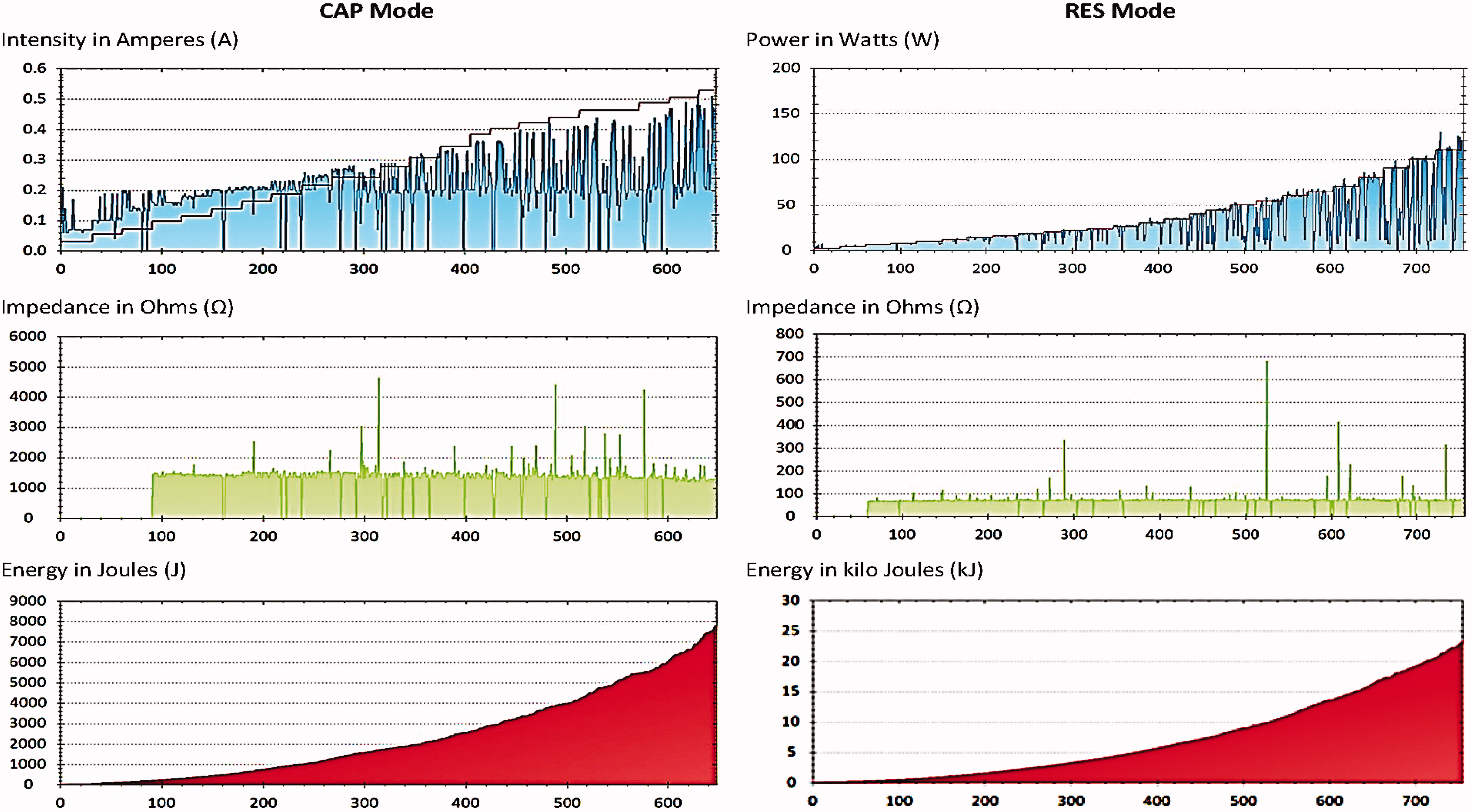
Figure 2. The experimental setting with the 448 kHz capacitive resistive monopolar radiofrequency (CRMRF) device (Indiba Activ 902), electrodes and the computer-based monitoring software.
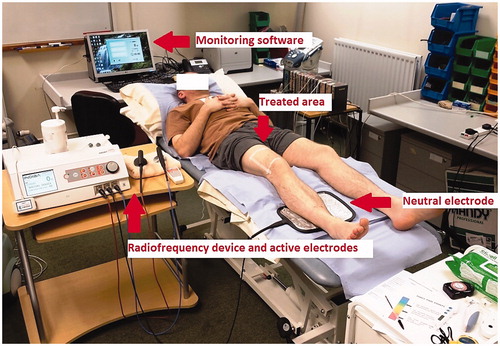
Table 1. Demographic and mean (±SD) anthropometric data from the 15 participants who received localised 448 kHz capacitive resistive monopolar radiofrequency (CRMRF) treatment.
Figure 3. (A) Capacitive (CAP) and resistive (RES) mode mean skin thermal responses to localised 448 kHz capacitive resistive monopolar radiofrequency (CRMRF) treatment. The data shown (baseline, post-treatment and 45-min follow-up) are from 15 participants. *Statistically significant differences when compared to the baseline (at p < 0.05) (two-way repeated measures ANOVA). (B) Capacitive (CAP) and resistive (RES) mode individual skin thermal responses to localised 448 kHz capacitive resistive monopolar radiofrequency (CRMRF) treatment (treated side only). The data shown (baseline, post-treatment and 45-min follow-up) are from 15 participants.
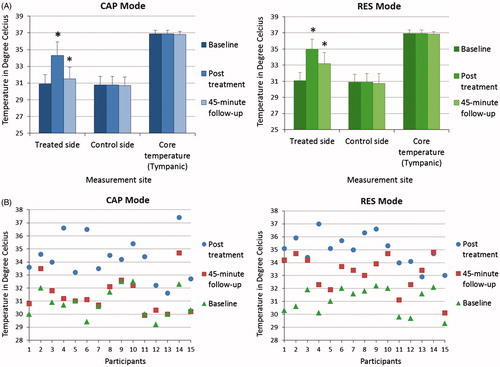
Figure 4. (A) Capacitive (CAP) and resistive (RES) mode mean skin thermal changes after localised 448 kHz capacitive resistive monopolar radiofrequency (CRMRF) treatment (treated side). The data shown (thermal build-up, thermal decay and thermal retention) are the changes in relation to the baseline from 15 participants. *Statistically significant differences when compared to the baseline (at p < 0.05) (two-way repeated measures ANOVA). (B) Capacitive (CAP) and resistive (RES) mode individual skin thermal changes after localised 448 kHz capacitive resistive monopolar radiofrequency (CRMRF) treatment (treated side). The data shown (thermal build-up, thermal decay and thermal retention) are the changes in relation to the baseline from 15 participants.
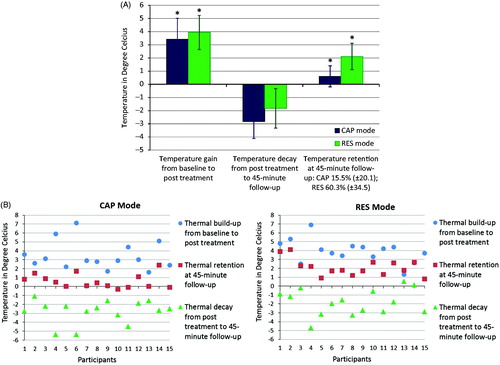
Figure 5. (A) Capacitive (CAP) and resistive (RES) mode mean skin thermal decay after localised 448 kHz capacitive resistive monopolar radiofrequency (CRMRF) treatment (treated side). The data are from 15 participants, showing the decay process from post treatment to 45-min follow-up. (B) Capacitive (CAP) and resistive (RES) mode individual skin thermal decay after localised 448 kHz capacitive resistive monopolar radiofrequency (CRMRF) treatment (treated side). The data are from 15 participants, showing the decay process from post treatment to 45-min follow-up.
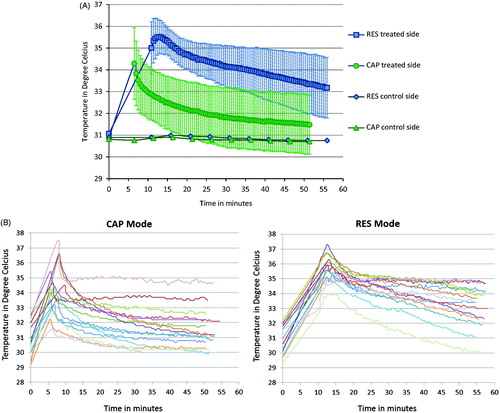
Figure 6. (A) Capacitive (CAP) and resistive (RES) mode time-specific individual skin thermal responses to localised 448 kHz capacitive resistive monopolar radiofrequency (CRMRF) treatment (treated side only). The data shown (thermal onset, definite thermal and thermal discomfort) are from 15 participants. (B) Capacitive (CAP) and resistive (RES) mode energy-specific individual skin thermal responses to localised 448 kHz capacitive resistive monopolar radiofrequency (CRMRF) treatment (treated side only). The data shown (thermal onset, definite thermal and thermal discomfort) are from 15 participants. (C) Capacitive (CAP) and resistive (RES) mode power (peak)-specific individual skin thermal responses to localised 448 kHz capacitive resistive monopolar radiofrequency (CRMRF) treatment (treated side only). The data shown (thermal onset, definite thermal and thermal discomfort) are from 15 participants.
